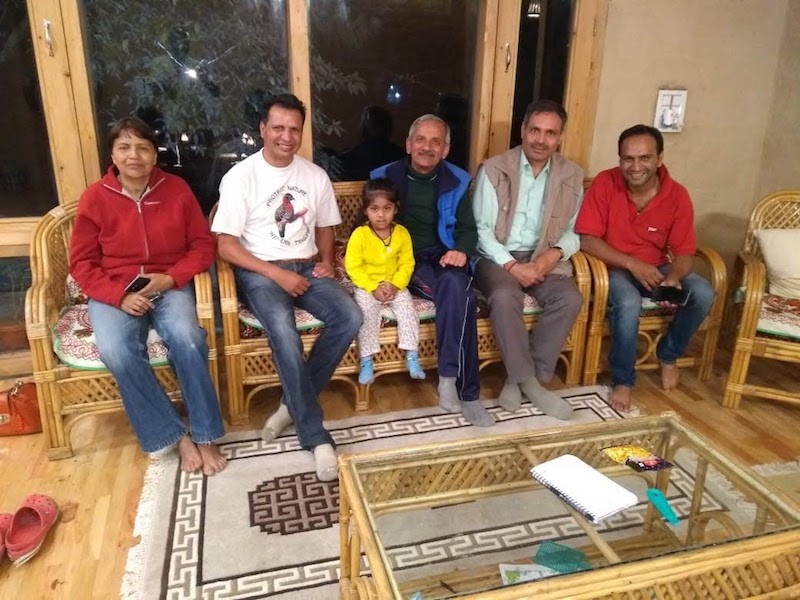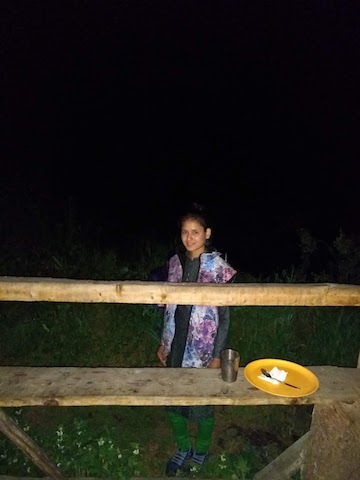The lemming instinct or phenomenon, the “herd instinct” as it is better understood, can be better appreciated in anthropomorphic terms such as “keeping up with the Joneses” or “when in Rome do as the Romans do.” In north India it becomes most evident in the summers, especially during the school vacations, when tens of thousands of ordinary, hard working and harder swearing folks in the cities get into Bermuda shorts or pleated skirts from Fab India, dump their kids in the boots of their SUVs, and head for the hills. They come in locust like droves, unstoppable, denuding the landscape of all resources – water, electricity, road space – and though, unlike the lemmings, most will not die (though a few will drive themselves off precipices), they will not let anything stop them on the way to the promised land – Shimla, Nainital, Kausani, Manali.
As a long-time resident of Shimla and its environs I have never ceased to wonder at the primeval force that drives these urban lemmings to the mountains, to pay – in hard cash, plenty of it – for the tribulations and indignities that will be heaped on them in the next week or so. They will happily be stuck for hours in traffic jams, take seven hours (and three toilet breaks) to progress from Kalka to Shimla, spend half their holiday time looking for a parking slot on Cart road, be ripped off by every coolie, hotel tout or pony (disguised as a yak) owner, be shouted at by petite lady cops near Victory tunnel. They will be sold water at Rs. 50 a bucket, will have to wade through horse shit in Kufri, will be groped on the Ridge regardless of their sex (we’re next to Punjab, right?). And yet they keep coming – wave after inexorable wave, into towns that are beginning to look more and more like Govindpuri or Sangam Vihar with a few drooping deodars thrown in. Why, I have asked myself for years, should they run from one urban mess to another at such great expense? Do they have no wish to see the real Himachal (or Uttarakhand) – the dense forests, gurgling streams, sheep dotted pastures – or partake of the delicious “siddu”, karhi-chawal, khatta, bhaturu or madra , all washed down with the soul awakening “ghanti” or angoori ?
And so it was a pleasant surprise for me to have my answer last week on a visit to the Tirthan valley. I had gone with a few friends (after a Pandava style “banwas” of seven years) for a trek in the GHNP (Great Himalayan National Park), invigorated by a few drams at the scenic new Home Stay of my old (but considerably younger) trekking buddy, Ankit Sood, bang on the banks of the Tirthan. We went via Ani and the Jalori pass to avoid the lemmings on the Bilaspur-Mandi route and were amazed at the number of delightful little home stays that had come up: we counted at least a dozen between Jalori/Khanag and Banjar, and the Tirthan valley itself has more than forty. (There was only one, as far as I can recollect, ten years ago). They all appeared to be doing well, going by the number of cars parked outside. At the Sairopa forest rest house were another seven or eight groups of tourists. Inside the GHNP itself we met more groups in trekking mode – the Range Officer informed us that in these months about 30 people go into the Park everyday. We spoke to some of them, all youngsters (men and women in equal numbers) from Gurgaon, Bangalore, Bengal, Chennai, professionals and self-employed. They were mostly unanimous in their view that they had no interest in going to the towns and just wanted to spend a few days in the uncomplicated, tranquil embrace of nature, listening to the bird calls, wading in the pools and hopefully sighting a ghoral or monal. I was overjoyed, because this is what the goal, and face, of tourism in our state should be. It appears that the younger generation is finally treading a new path, discovering a nature that has been banished from their gated high-rises in the cities, and perhaps showing us a way to a more sustainable and less predatory form of tourism. It is now for governments to take up the challenge of channelising this nature tourism to ensure that it too does not morph into a monster of its own.

There was another aspect to this tourism that warmed the cockles of my fibrillating heart. Women’s empowerment has come a long way in India – we have had (and still have) women cabinet Ministers, Chief Ministers, CEOs, leading journalists, writers, bankers; why, we even have a gang leader in Delhi who is a grandmother and has more than one hundred cases registered against her, including murders and kidnappings! But this is empowerment of the elite, as it were. What is sorely needed is empowerment at the bottom of the heap, where testesterone still rules. And so it was a revelation for us to discover at the Rolla camping site that a woman – a chit of a girl, actually – had breached another male bastion. Her name is Vandana, all of 21 years, and she is a trekking guide, escorting a party to Shilt meadow at 3200 meters. She is the only one of her type in GHNP, and perhaps in the whole of Himachal. Vandana told us she is from village Tinder, just outside the Park, and her brother runs a home stay in the village. She has graduated in science from Banjar college and now plans to pursue her MSc from Shimla. I found her bright, intelligent, confident, enterprising, holding her own in a man’s world.

Further up, at Khorli Poih ( 3100 m.), we ran into another breach in the male fortress, in the form of another young lady – Mun Mun from Dharamsala, the daughter of an Air Force officer, a naturalist who is shooting a film on the Western Tragopan for National Geographic. She had made the expedition all alone, accompanied only by her porters. A truly remarkable young girl, with unlimited energy and completely focused on her assignment: while we were still wrapped up and fast asleep in our tents at 4.00 AM she was out in the cold darkness setting her camera traps in the jungle. We discovered just in time that she had planned to set up one camera (unwittingly, of course) right next to our toilet pit ! I’ve always fancied my photo in the National Geographic, but not in these circumstances over a caption entitled “homo crapiens.”
Vandana and Mun Mun (she wouldn’t give us her surname, but said it wasn’t Sen!) made our trip doubly rewarding. I can only wish more strength to their elbows – and knees. Girls like them make us proud, with perhaps a lingering regret at not having had a daughter.
| The author retired from the IAS in December 2010. A keen environmentalist and trekker he has published a book on high altitude trekking in the Himachal Himalayas: THE TRAILS LESS TRAVELLED.
His second book- SPECTRE OF CHOOR DHAR is a collection of short stories based in Himachal and was published in July 2019. His third book was released in August 2020: POLYTICKS, DEMOCKRAZY AND MUMBO JUMBO is a compilation of satirical and humorous articles on the state of our nation. His fourth book was published on 6th July 2021. Titled INDIA: THE WASTED YEARS , the book is a chronicle of missed opportunities in the last nine years. Shukla’s fifth book – THE DEPUTY COMMISSIONER’S DOG AND OTHER COLLEAGUES- was released on 12th September 2023. It portrays the lighter side of life in the IAS and in Himachal. He writes for various publications and websites on the environment, governance and social issues. He divides his time between Delhi and his cottage in a small village above Shimla. He blogs at http://avayshukla.blogspot.in/ |




It’s wonderful to learn that there are eight more Vandana types trained by you, Ankit. That’s the way to go since I notice more and more girls are now going on treks. Having girl guides would instil more confidence in women’s groups to undertake this most fascinating of adventure sports. Keep up the great work you are doing in the area for promoting eco-tourism, which will be the only sustainable form of tourism in the days to come. Incidentally, I’ve heard from Mun Mun also, who has also read this piece: she has made a documentary on Spiti earlier, which won an award at the Indian Mountaineering Federation show last year.
It is the food that originated in India that came back with us to England that I love.India is but a dream to see now 60 years on as so much will have changed from the days of British Empire. Yes I will come back and visit so many of my native Indian friends, those still alive that is. Curry we call the gravy made of spices and herbs. Madras and Vindaloo with chicken and basmati rice and chapati just delicious food to me. Loved your photos and my thanks go out to you for that kindness in sharing views.